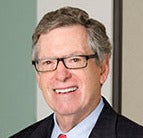Last summer, as more American companies like Mylan and Walgreen announced plans to relocate their headquarters overseas to avoid paying U.S. taxes—typically through combining under a new foreign holding company—the issue of “tax inversions” gained increasing attention in the media. Some 75 companies have inverted in the past two decades, most in the last seven years, according to the Congressional Research Service. The Joint Committee on Taxation reports that this has resulted in the loss of as much as $20 billion in tax revenue for the U.S. over the past decade.
The U.S. has lost as much as $20 billion over the past decade due to corporate inversions, according to the Joint Committee on Taxation.
Predictably, as the issue of inversions grew in prominence, it quickly became polarized. President Barack Obama ’91 decried these companies for their lack of “economic patriotism,” and said in July, “I don’t care if it’s legal—it’s wrong.” Corporate lawyers and others took issue with this characterization. “Our clients are doing something that’s perfectly acceptable under current law as it stands, and we assist them in doing it the right way,” says Michael Mollerus ’88, a partner with Davis Polk & Wardwell and an expert on inversions.
The problem is that the U.S. tax rate is too high, the business community believes. The system “is broken and not working to the advantage of U.S. companies and the U.S economy in general,” says Mollerus. “What you’re seeing with inversions is a response to a system not working very well, and no one really taking any action to fix it.”
The U.S. has the highest corporate tax rate in the world: about 39 percent at the high end when state and federal taxes are combined, compared with 29 percent in other countries in the Organization for Economic Co-operation and Development. Others claim this figure is misleading: Through the use of credits and deductions—loopholes, in other words—the effective tax rate for corporations is actually 27.1 percent, lower than the average effective rate of 27.7 percent in other OECD countries, according to a report by the Congressional Research Service. And profitable U.S. companies with at least $10 million in revenue had, on average, an effective federal tax rate of just 13 percent on their worldwide income for financial accounting purposes in 2010, according to The Wall Street Journal, quoting a Government Accountability Office report.

President Obama tried to find a solution that would please the business world without losing too much revenue: Two years ago, he proposed cutting the corporate tax rate to 28 percent while also closing loopholes. But Congress chose not to act.
But the problem isn’t just the tax rate, corporate lawyers say. Unlike most other nations, which generally tax income earned within their own borders—what’s called “territorial taxation”—the U.S. taxes money earned elsewhere once it’s brought stateside, through a “worldwide taxation” regime. That serves as a disincentive for corporations to bring money earned abroad back into the U.S., including for investing in jobs and plants.
And so, the inversion stampede continued—and, without congressional action, there was nothing the administration could do, Treasury Secretary Jacob Lew lamented in mid-July.
Harvard Law School Professor of Practice Stephen E. Shay thought otherwise. On July 29, Shay, who served as deputy assistant secretary for international tax affairs in the Treasury Department before joining the HLS faculty in 2011, published a short article in a respected but arcane tax journal. He suggested that the Treasury Department could use existing regulatory authority to make changes that remove major incentives for inversions: the ability of U.S. companies to deduct interest payments on loans from their new foreign affiliates, thus reducing their taxable income—a practice known as “earnings stripping”—and the ability to use untaxed offshore earnings for dividends and stock buybacks. Shay, a former tax partner at Ropes & Gray, said the Treasury could simply recharacterize excess debt as equity and expand limits on the use of untaxed offshore earnings.
“I was suggesting these things aren’t out of bounds, and we ought to be thinking more outside the traditional envelope,” Shay says.
Just days later, in a complete about-face, Lew announced that the Obama administration was debating whether to take executive action to halt inversions.

Many have applauded the creativity of Shay’s regulatory proposal. When Congress is dysfunctional, “it’s not so bad for Treasury to step in,” says Thomas J. Brennan ’01, a professor at Northwestern Law School who is joining the HLS faculty next year. Even those who disagree with Shay’s proposal praise him for catalyzing discussion on tax reform. “The president and Secretary Lew are saying we’d prefer to have legislation,” says Mollerus. “But this has certainly added to the debate.”

On Sept. 22, the administration announced new regulations that remove one of the major incentives to invert that Shay had recommended could be addressed: the tax advantage of so-called “hopscotch loans,” by which the parent company in the U.S. avoids paying taxes on its foreign subsidiaries’ earnings. It appears Treasury may go even further: The administration has asked for comments on its regulations, including on how to address the problem of earnings stripping.
Meanwhile, Congress remains deadlocked on the issue, even as lobbying by corporations such as Novartis AG, Medtronic Inc. and Mylan to halt congressional or administrative action doubled in the quarter ending Sept. 30, according to Bloomberg Business News.
One thing upon which there is widespread agreement: The focus on inversions has brought much-needed attention to a tax system desperately in need of an overhaul.
The U.S. is losing billions through companies taking deductions on loan interest paid to their sister corporations in other countries, says Brennan. In addition, there are many more trillions parked overseas that the U.S. can’t tax unless it’s brought home; corporations aren’t about to release it, given the U.S. tax that would be imposed. In 2004, the U.S. government declared a tax holiday, offering to forgive 85 percent of all the tax due on monies stockpiled overseas, and companies returned $312 billion to American shores, Brennan notes. But instead of tax holidays and exceptions, he says, it would be far better to create a stable tax system more in line with those of other countries.

Over and above lost revenues, HLS Professor John Coates, an expert in mergers and acquisitions, finds inversions very unhealthy from both the M&A and corporate governance perspectives. Given the high costs of undertaking an inversion, Coates says, “It’s a bad thing generally from the perspective of economic efficiencies for multibillion-dollar transactions to be pursued principally for tax reasons.” Moreover, U.S. shareholders enjoy far less protection when a corporation is based in a foreign jurisdiction, he adds.

The issue of addressing inversions is “urgent,” says Mihir A. Desai—who holds professorships at HLS and Harvard Business School—not just because of the tax revenue lost to the U.S. but also because of the loss of investment and productivity.
“There is deep dysfunction in the corporate tax system today, giving rise to numerous distortions, the most visible of which is inversions, which are very costly,” says Desai, who testified on the issue before the Senate Finance Committee in July.
While he is adamant that action is needed, “The question is whether you do something that is a stopgap measure to stop these particular transactions, or something more thoroughgoing that addresses the underlying issue,” Desai says.
This moment is “an opportunity for real reform” to the tax code, he adds: Inversions are “the tip of the iceberg on the distortions the corporate tax has given rise to. I hope we can think about it that way, as opposed to, ‘Oh, we have a revenue problem and we have to stop these crazy transactions.’ That would be missing the forest for the trees.”
Since both sides agree on the need for a reduced tax rate and the move to a territorial system, Desai believes real reform is possible.
“There’s enough consensus about what’s problematic that we could actually get there,” he says.
But the key, Brennan says, is to engender reform that would incentivize companies to keep their headquarters in the U.S. without “giving away the farm” and reducing revenues too much. Like Desai and others, he would like to see the U.S. move to a territorial regime and lower its corporate tax rate to something more akin to those of other countries—20 percent, say. “That would take away a lot of the advantage of moving to another country,” he says.
Coates agrees with the need for reform. “The right thing is for Congress to pass a general set of tax reforms that ideally would be revenue-neutral … and eliminate incentives to move abroad,” he says, adding that such reforms could be accomplished in a number of ways. Unlike Desai, he’s not hopeful.
“Since neither party can figure out how to compromise … it’s likely nothing will happen at that level,” Coates says.
Others are equally skeptical about the likelihood of real change.

“It just ain’t gonna happen—not in my lifetime,” says H. David Rosenbloom ’66, a partner at Caplin & Drysdale in Washington, D.C., who served as international tax counsel and director of the Office of International Tax Affairs in the Treasury Department for four years. Congress “can’t get together to name a post office, let alone do something as important as this.”
In the meantime, the administration is stepping in.
“That leaves it to Treasury and the executive branch, which has a fair amount of discretion to cut back on some of the tax benefits of inversions,” says Coates. “While those will both be controversial and not fix the problem entirely, that would go a long way toward improving things.”
Adds Brennan, “It’s a very clever idea on how to go about stopping inversions.” But unlike a major change based on carefully considered principles, “it’s more of a stopgap for [preventing] substantial bleeding—and then [we’ll] come back in a couple of years and get it right.”
